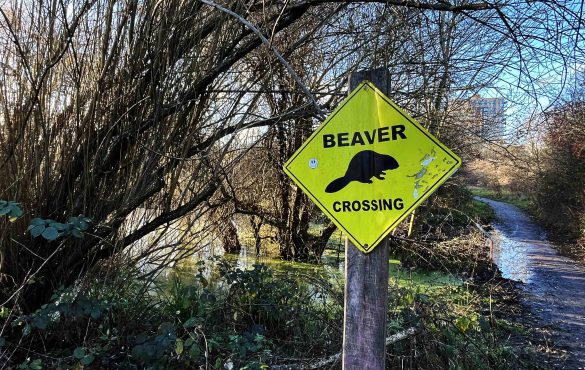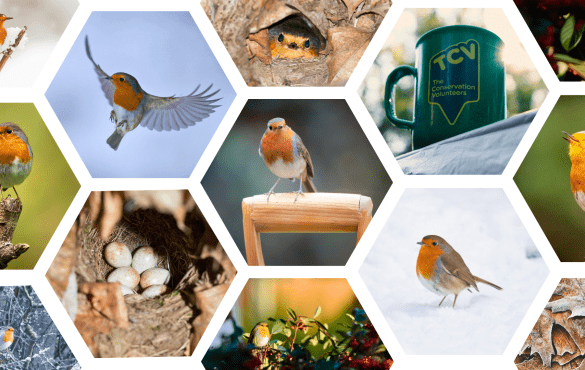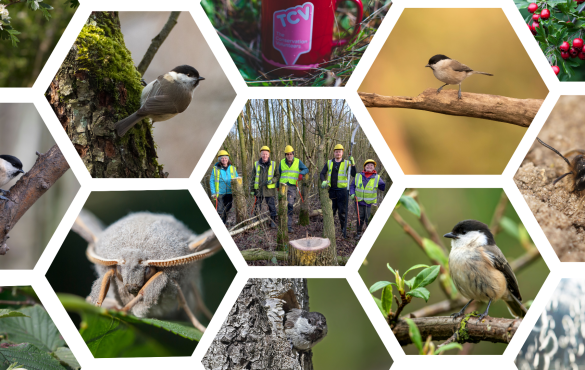Planting trees is a simple act, but its impact on communities is profound. From improving mental health to reducing flood risk, trees are nature’s multitaskers. In the UK, where woodland cover is just 13.5%, one of the lowest in Europe, which averages around 35%, every tree matters for climate, wildlife, and our communities.
Through The Conservation Volunteers’ I Dig Trees programme, millions of free trees gifted to wonderful community groups have already been planted. The benefits go far beyond aesthetics. Here are nine surprising reasons why planting trees locally is one of the most powerful actions you can take…
See how far we’ve come with I Dig Trees and join the movement:
I Dig Trees Reporting.
1. Trees Improve Mental Health and Wellbeing
Access to green spaces reduces stress, anxiety, and depression. A landmark Forest Research study estimates that visits to UK woodlands save £185 million annually in mental health treatment costs, with benefits lasting for decades.
Why it matters: Urban trees provide daily contact with nature, boosting happiness and resilience. Biodiversity-rich spaces also amplify these benefits, according to King’s College London.
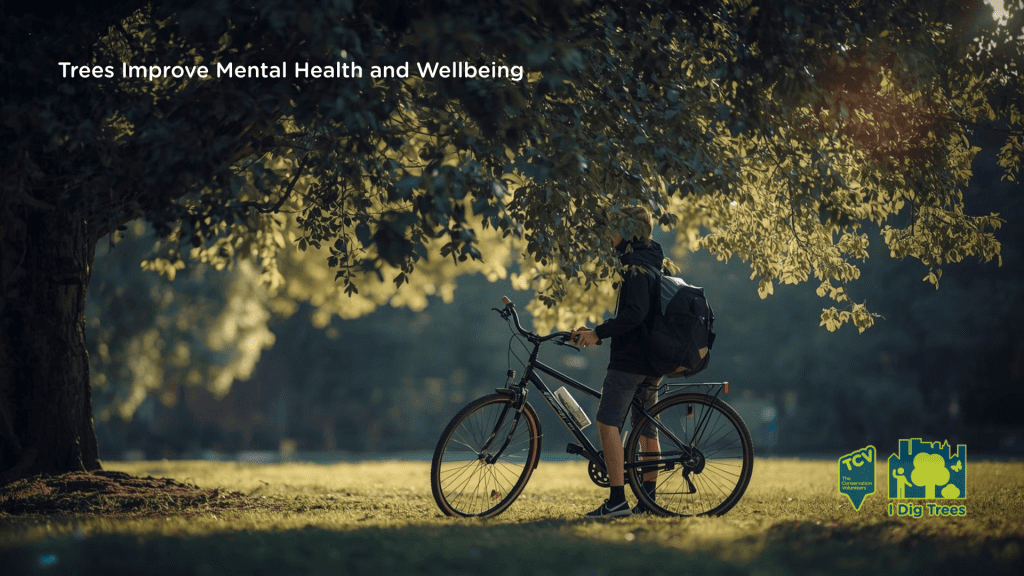
2. Trees Reduce Urban Heat and Create Microclimates
Urban trees act as natural air conditioners, lowering street temperatures by up to 5°C during heatwaves, according to Trees for Cities. This cooling effect is critical as the UK Health Security Agency recorded 2,803 excess deaths during the 2022 heatwave, with heat and air pollution creating a dangerous combination for vulnerable groups.
It also seems that cooling isn’t shared equally. Friends of the Earth reports that people of colour make up 65% of the population in the neighbourhoods with the least cooling. Their research includes heatmaps that show how inequality and lack of greenery overlap, highlighting the urgent need for fairer access to shade and trees.
Why it matters: This highlights the need for fairer access to shade and greenery. Trees don’t just cool cities – they save lives and help tackle environmental inequality.
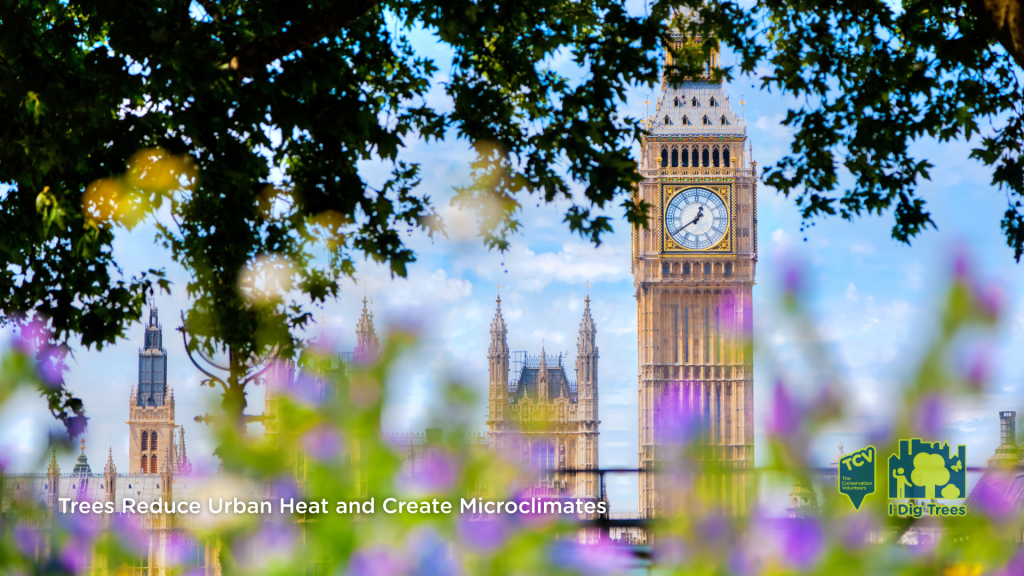
3. Trees Encourage Community Cohesion
Tree planting brings people together for a shared purpose. Working side by side to improve local spaces creates opportunities for conversation, cooperation, and shared pride. These projects often involve schools, residents, and volunteers, helping to reduce isolation and strengthen neighbourhood ties.
Forest Research highlight the social benefits of woodland creation, including improved wellbeing, stronger neighbourhood ties, and inclusive opportunities for diverse communities to engage with nature.
Why it matters: Planting trees isn’t just about the environment – it’s about people. When communities collaborate on green projects, they build lasting connections and a sense of ownership that makes public spaces feel safer and more valued.
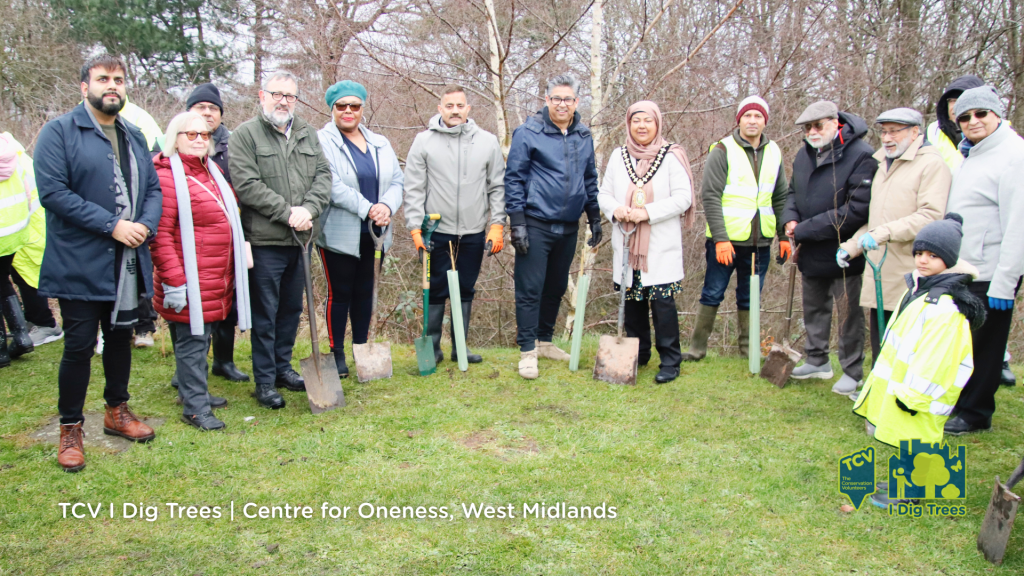


4. Trees Support Pollinators and Biodiversity
Trees are more than carbon stores – they’re living ecosystems. UK native species like hawthorn, blackthorn, and rowan provide nectar and pollen for bees, butterflies, and other pollinators, while their branches and roots create habitats for birds, mammals, and fungi.
Well-managed woodlands and diverse tree planting enhance biodiversity and support many protected species, contributing to healthier landscapes and resilient ecosystems. You can read more about the best trees for UK wildlife over here.
Why it matters: Biodiversity underpins everything from food security to climate resilience. Planting a mix of native trees helps restore habitats, connect fragmented landscapes, and create stepping stones or corridors for wildlife.

5. Trees Reduce Flood Risk
Tree roots improve soil structure, allowing rainwater to soak in rather than run off. Government research estimates that trees provide over £400 million annually in flood protection benefits, reducing surface water flooding and erosion. Planting trees along rivers and in urban areas can slow water flow and protect homes from damage.
Why it matters: With one in six properties in England expected to be affected by flood risk by 2050, trees offer a natural, cost-effective defence that works alongside engineered solutions.

6. Trees Create Wildlife Corridors
Fragmented habitats make it harder for species to survive. Planting trees as hedges and pocket forests in urban and rural areas helps link larger green spaces, creating safe routes for pollinators, birds, and mammals. TCV’s I Dig Trees programme is helping to restore these connections, turning isolated patches into thriving networks that support biodiversity and resilience.
Why it matters: Wildlife corridors (hedgerows) and stepping stones (pocket forests) make cities more liveable for nature and people, ensuring ecosystems can adapt to climate change.

7. Trees Improve Air Quality and Capture Carbon
Trees act as natural air filters, removing pollutants such as nitrogen dioxide (NO₂), particulate matter and ozone. Forest Research confirms that urban trees help reduce these pollutants, especially near busy roads where traffic emissions are highest.
Roadside planting can make a measurable difference: Defra guidance notes thatdense vegetation barriers can cut pollution levels immediately downwind by up to 50%, depending on species and design. Evergreen species with dense foliage are most effective for trapping particulates and slowing pollutant dispersion throughout the year.
Alongside pollutant removal, trees also lock away carbon. A single mature tree can absorb around 22 kg of CO₂ each year (though the actual amount varies depending on its species, age, size, and environment), making tree planting a practical step toward climate action.
Why it matters: Cleaner air means fewer respiratory illnesses and healthier communities, particularly in urban areas where pollution and traffic are greatest.
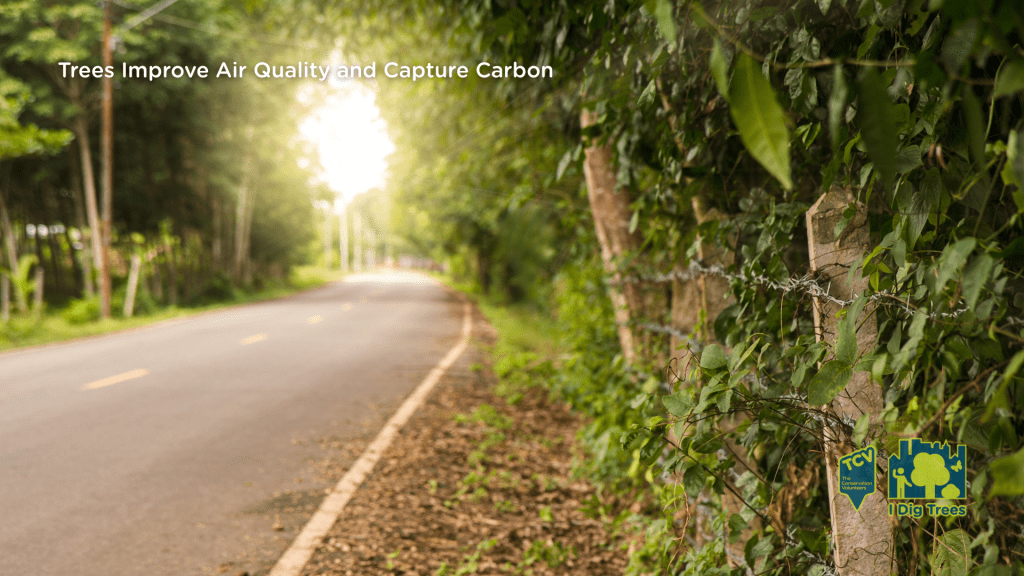
8. Trees Provide Educational Opportunities
Trees turn outdoor spaces into living classrooms. Forest Research highlights evidence that learning in woodland settings improves engagement, wellbeing, and academic performance, especially for younger children. Activities like planting and monitoring trees teach STEM skills, climate awareness, and conservation ethics in a hands-on way.
The Natural Connections Demonstration Project supports this, with 92% of teachers reporting improved pupil engagement during outdoor lessons and 85% noting better behaviour.
Why it matters: Outdoor learning boosts confidence and curiosity while connecting children to nature. Schools and community groups can use tree planting as a gateway to environmental education and lifelong stewardship.

9. Trees Can Boost Property Value
Turns out money really does grow on trees… well, sort of.
Planting trees isn’t just good for the environment – it can also be good for your wallet in the long term. Mature trees can add thousands of pounds to a home’s value, according to UK property experts and guidance from Real Homes. Trees improve kerb appeal, provide privacy, and even help reduce energy bills by shading homes in summer and acting as windbreaks in winter.
Why it matters: Greener streets attract buyers and investors, making tree planting a subtle but powerful way to boost local prosperity and create desirable neighbourhoods – all whilst helping wildlife at the same time!

How You Can Make a Difference
UK trees and woodlands are estimated as a £382 billion national asset according to the Office for National Statistics, delivering billions each year in benefits like cleaner air, flood protection, and improved health.
Every tree planted is a step toward healthier, more resilient communities. Through I Dig Trees, millions of free trees have already been planted – but the movement is really just beginning – and we need you!
When businesses and individuals come together, communities thrive. By donating as an individual or developing a corporate partnership with us, you’ll help deliver projects that connect people to nature and leave a lasting legacy for future generations.
Check out our biodiversity-friendly tree packs for community groups and join in, feel good with TCV – creating better nature for all!
Keep up to date with the latest news and activities from The Conservation Volunteers by following us on Facebook, LinkedIn, Instagram, BlueSky and YouTube.
You can also sign up to receive TCV’s Greenzine e-newsletter for more ways to get involved. TCV is active across most of the UK: Click here to find your nearest office or activity


